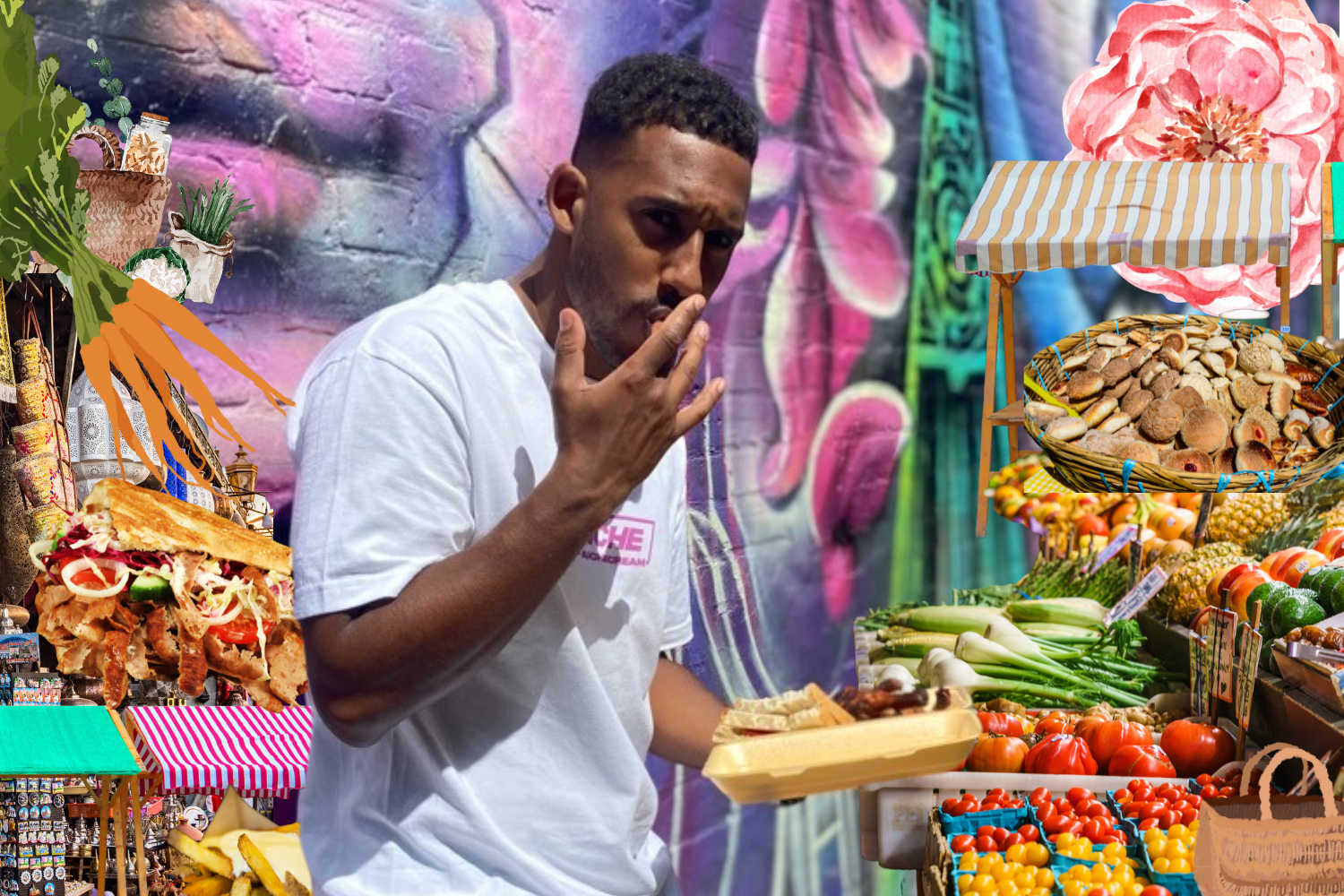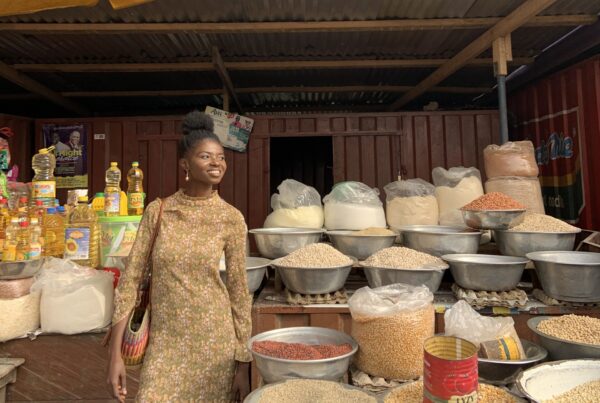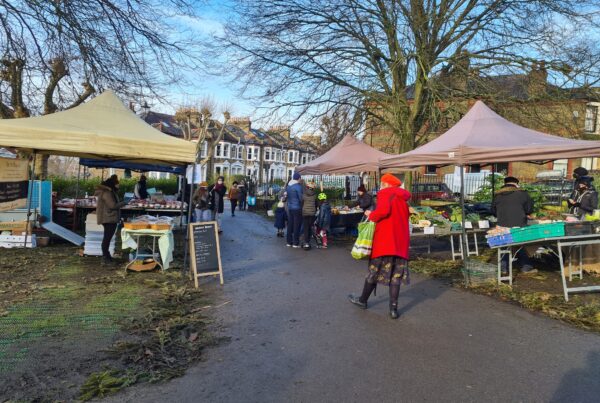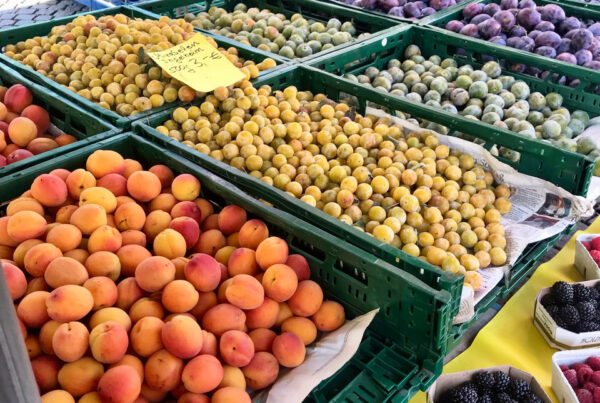For the best street food in Amsterdam, you have to go to the market. But not all markets are created equal. To find the best ones, I spoke with born and raised Amsterdammer Nana Asare, a content creator, political educator, and former financial consultant who is on a mission to uncover the Dutch capital’s most authentic food spots, sharing his discoveries on social media.
by Hajni Nagy
Nana grew up just around the corner from the Albert Cuyp market, a market featured on many Amsterdam must-do lists. As a child, he was a regular visitor, accompanying his parents on trips to buy groceries and passing by the stalls after school.
With nearly 300 stalls spanning over a kilometre-long street, the Albert Cuyp is one of the largest daily markets of Europe. The market’s history of over 100 years is closely linked with Amsterdam’s multicultural De Pijp neighbourhood. Originally a working class neighbourhood, it has evolved into one of the city’s trendiest areas.
Over the years the market changed as well, but Nana noticed the biggest shift during the pandemic. Taking advantage of the government’s essential businesses order, which permitted food-related businesses to remain open, the market saw a surge in newcomers specialised in trendy street food aimed at tourists and the “yuppies”.


Nana shares videos of “OG food spots” in Amsterdam
Nana got the idea for his first video showcasing authentic neighbourhood spots after seeing an Instagram post about a food tour in De Pijp. He recognized the locations featured as the businesses that replaced the old establishments he used to frequent that departed due to rising rents and demographic shifts in the area.
Encouraged by the success of his first video, Nana set out to taste the best authentic dishes the city has to offer. In his videos, he often takes viewers to some of Amsterdam’s top markets, primarily catering to locals who have lived in these neighbourhoods for generations.
The Dappermarkt: fruit deals and the best döner kebab in Amsterdam
Today, Nana lives in the east of Amsterdam, only a 10 minute walk from the Dappermarkt. It reminds him of how the Albert Cuyp market once used to be. “You can get everything there. There are three Ghanaian shops, butchers, fish stalls, Surinamese shops, Turkish shops and so much more. That’s where I usually go when I just want to take a walk or have some lunch,” he said.
It’s also where he gets his watch fixed at the repairman’s stall and the perfect place to stock up on fruits and vegetables in bulk. “Fruit stalls have deals on boxes of fruit,” he said. “I often buy a box of lemons, avocados or mangos and just put it in the fridge for later. It’s the old school way of selling stuff in Amsterdam”
The Dappermarkt is also a great street food destination. Nana recommends Beste Döner, where you’ll find doner kebab made of 100% lamb. It is praised as the best in Amsterdam. “It reminds a lot of people of the kebab you can get in Berlin. I haven’t been to Berlin yet, so I can’t confirm,” he said.
He has yet to try the fries with stew meat (patat met draadjesvlees), which are another popular option available at the Dappermarkt, known as the best in the country. But he’s a fan of another Dutch classic: Ome Tom’s poffertjes, mini pancakes served with butter and powdered sugar
There’s a wide selection of Surinamese specialties available like chicken and blood sausages, or tripe cooked in spices with pepper sauce. Surinamese cakes such as the rainbow cake and bojo are always available for those with a sweet tooth. Bara, a Surinamese savoury doughnut made with lentils and spices, is freshly made at the market. While it’s good, it’s not Nana’s top choice in the city.
The Ganzenhoef market: the perfect bara and Ghanaian oliebol all year round
For the best bara in town, you’ll have to make your way to the Ganzenhoef market on a Saturday. The Ganzenhoef market is named after a now defunct shopping centre in Amsterdam-Zuidoost (Southeast Amsterdam), a disadvantaged neighbourhood of Amsterdam.
The market reflects the diversity of the neighbourhood with Surinamese, Caribbean and African stalls, including many Ghanaian businesses. Nana’s dad is originally from Ghana, so he’s drawn to the market’s large selection of ingredients that are key to Ghanaian cooking. He learned to cook early because his mom is vegetarian and he didn’t want to bother her about cooking meat. His cooking videos are a popular part of his online content.
Beyond serving the most delicious bara in Amsterdam—crispy on the outside and soft on the inside, topped with mango chutney—Nana also recommends trying the fried chicken and fish at Lomnava Kenkey House, Surinamese sausages from Milly’s Warme Worst, and bofrot, akin to the Dutch oliebol (fried dough) but with Ghanaian origins.


Left: the best bara in Amsterdam. Right: Bofrot, a Ghanaian fried dough ball. Source: TikTok
Gentrification at the market
The formerly working-class Jordaan neighbourhood has also been affected by gentrification. It is now famous for skyrocketing real estate prices, natural wine bars and cafes serving matcha latte. The two Saturday markets of the area, The Lindengracht market and the Noordermarkt, are favourites among many young professionals, expats, and tourists in search of sourdough bread or specialty brownies.
While these are not Nana’s first choice, he respects the many passionate and hardworking entrepreneurs who sell quality products at these markets. The Lindengracht market still has a few gems. He gave the goat meat saté at Saté Bar Charley a score of 8.2. The Syrian baklava, less sweet and packed with nuts, from the small stall run by a Syrian family earned an 8.6—an impressive rating, especially if you are familiar with the Dutch grading system.
Left: Syrian baklava. Right: Saté Bar Charley’s goat meat saté is a must-try at the Lindengracht market. Source: TikTok
But it’s far from Nana to be a contrarian. He’s happy to try popular spots, like the pork belly buns at the Lindengracht market, even though you won’t see them featured on his channel. “I don’t think these are the markets that are mostly visited by diverse young people in Amsterdam like me. And if you asked the long-term residents of the Jordaan if they’d buy sourdough bread for €7, they’d spit on you,” he joked.
Building a bridge
Before leaving his corporate job, it was common for Nana and his ex-colleagues to discuss their weekend activities. But he noticed that none of them went to or even knew about the places he likes to visit. These are not the places that go viral on social media and he finds that unfair.
“I promote a lot of food spots that are in Amsterdam-Zuidoost, that are not well known or don’t look that appealing,” he said. He’s aware that social media virality might negatively affect businesses but he’s not worried.
“A lot of people who see my videos are too ignorant or too biassed to visit those places in the first place. Most tourists and expats won’t go there. But people with the right mindset, who are open to new things, might go, and I want them to go.”
Someone messaged Nana after trying one of his recommended restaurants. The Chinese Antillian restaurant owner, who previously told him about his financial stress, couldn’t sleep for four days because of the increased traffic his video brought in. “For me that’s a good feeling,” he said. “I want to build a bridge between people who usually only go to gentrified spots and the spots I go to. I want to show them, this is also Amsterdam. This is my Amsterdam!”








